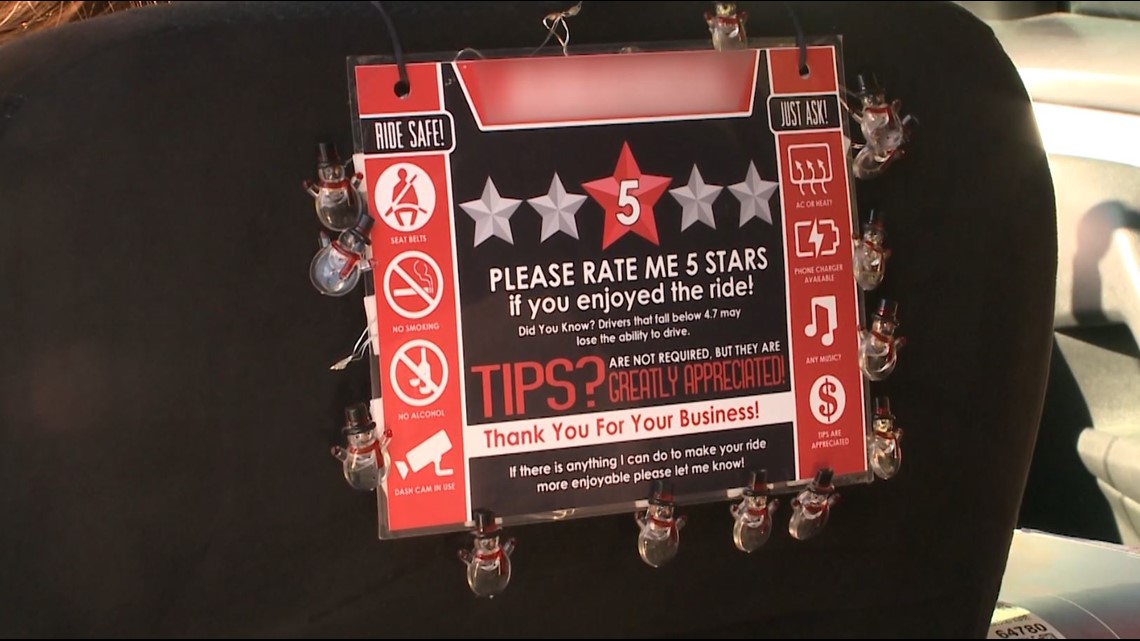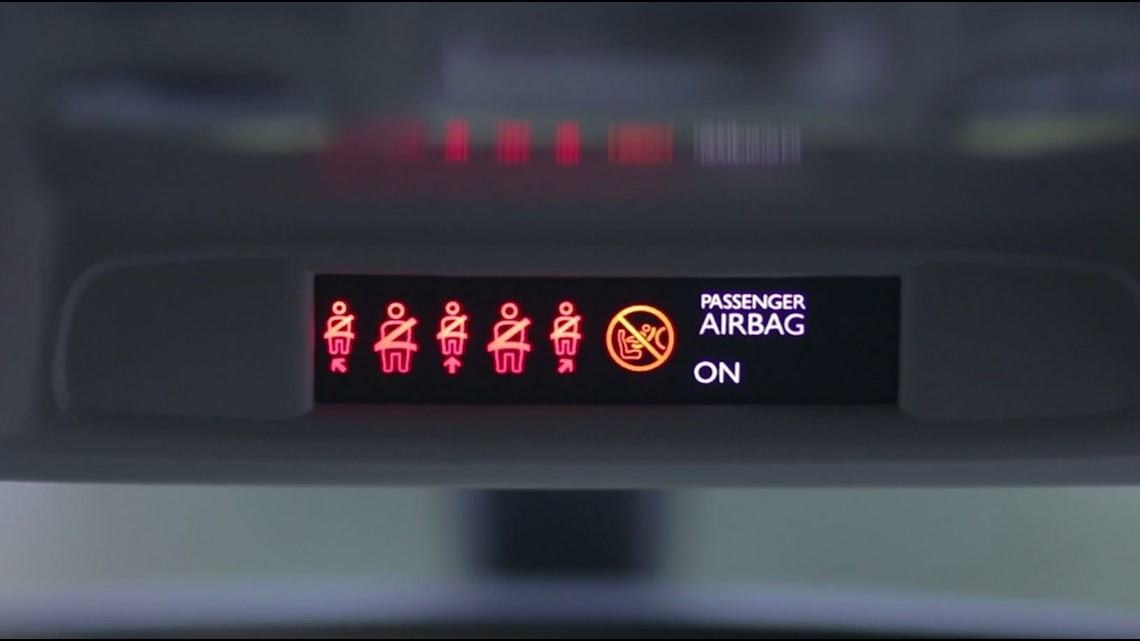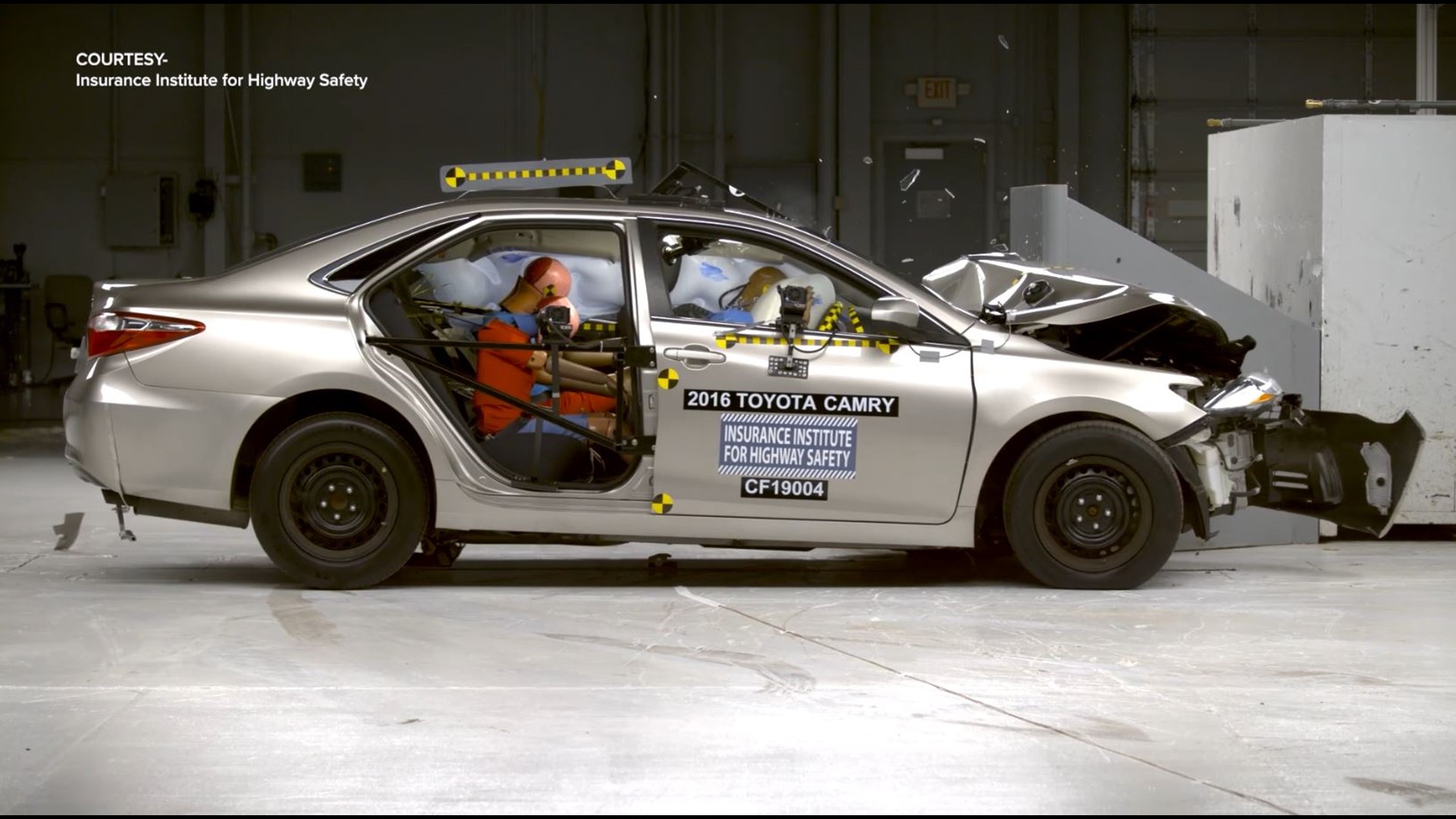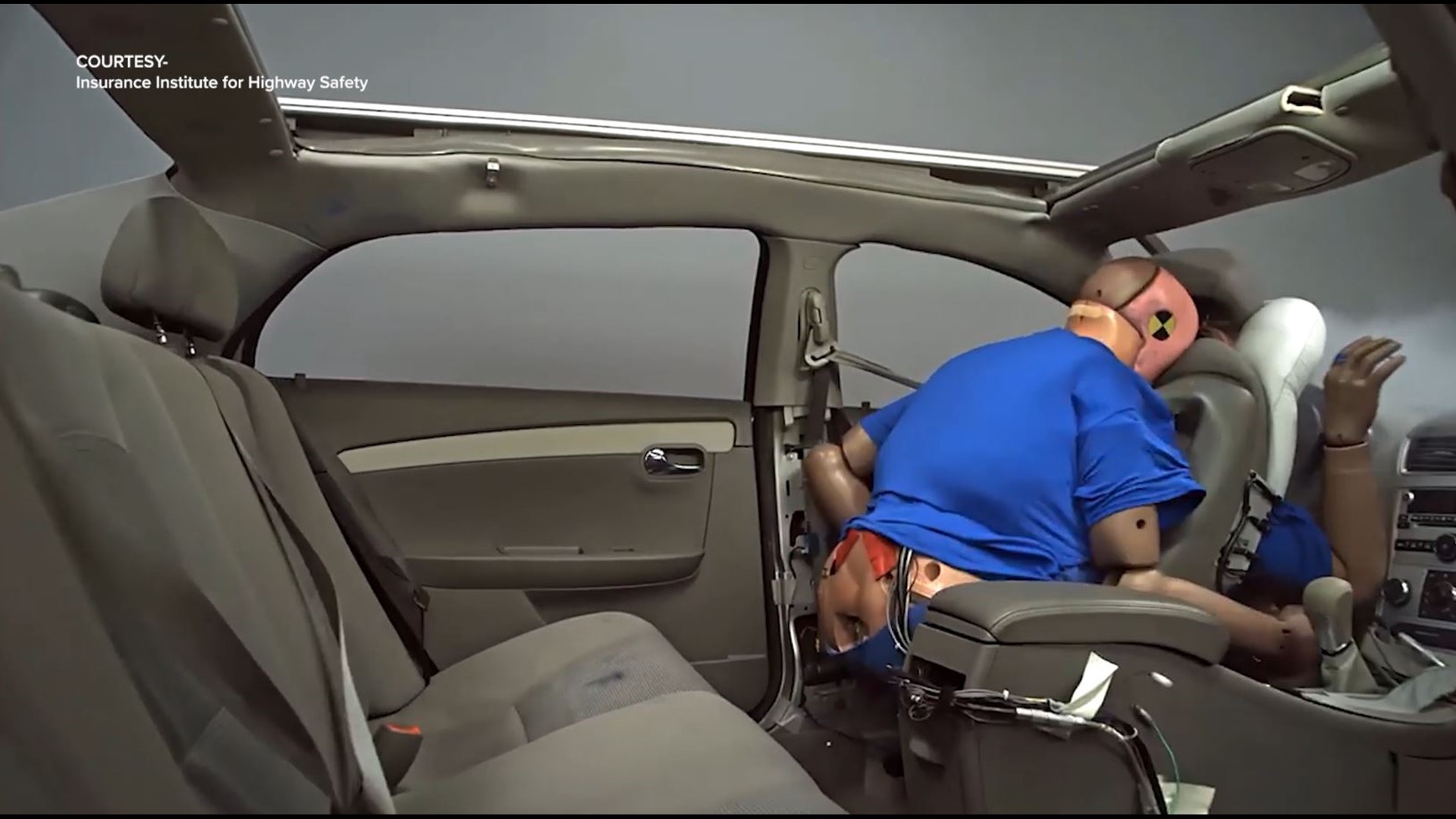ATLANTA — With more than three billion rides reported last year and the popularity growing with rideshare companies like Uber and Lyft, federal lawsuits and proposed legislation are looking at how to make the back seat safer.
According to the National Highway Traffic Safety Administration (NHTSA), in 2017, more than a thousand unrestrained passengers died nationwide. A safety audit released by Uber, noted 23 of its own riders killed in crashes. The report doesn’t say whether passengers were wearing seatbelts.
The Reveal investigator Rebecca Lindstrom spent time with a driver who works for both Uber and Lyft. To protect her identity, she asked that we only call her Megan.
Megan gave more than 1,500 rides in 2019. When she noticed most of her passengers failing to buckle up, she made signs offering them bottled water, a chance to pick the music, and a friendly reminder to wear their seat belt. Megan says it has helped, but most people still don’t buckle up.
“The younger they are, the less likely that seat belt will ever be put on,” said Megan.


Megan records her rides in case there’s a problem, so we asked to see her videos from one weekend. Out of 24 rides, 11 groups of passengers, or less than half, wore their seat belts.
“We know that rear seat occupants are eight times as likely to be seriously injured when they’re not buckled up,” said Jessica Jermakian, Vice-President of Vehicle Research for the Insurance Institute of Highway Safety (IIHS).
Jermakian says IIHS’ research also shows knowledge isn’t doing much to change behavior, especially when riding in a taxi or rideshare.
“They tell us things like – it’s safer in the back seat, they don’t need to. Or they’re not in the habit of doing it, or they forget,” claimed Jermakian.
In a 2017 survey by IIHS, 15 percent of those who responded reported not wearing their seat belt in the back because they were only going short distances. But Megan showed us one video of a rider that traveled for more than an hour - and never buckled up.
IIHS releases video showing what happens to an unbuckled rider in a crash.
► WATCH | The Reveal Sundays at 6 p.m. on 11Alive
But Lindstrom found her own tragic examples in the real world.
A wrong-way driver crossed I-85, hitting a Roswell family traveling through South Carolina. The impact totaled the front of the car. But troopers say it is the two passengers in the back, neither wearing a seat belt, that died.
“I have served as a firefighter for three decades and I have been to more car accidents than I can ever remember. And I have been there when we had to call the coroner,” recalled Georgia Senator John Albers.
Still, until Albers chaired a study committee last fall, he thought Georgia could fix the problem with more PSA’s. Now, he is supporting legislation to join 30 other states, extending 'Click It or Ticket It' guidelines to adults riding in the back seat.
Lindstrom asked what happened in that committee to change his mind.
“I think it was the ongoing abundance of evidence showing why this made sense,” said Albers.
Across the country, fines range from $10 to $200. Under Georgia’s proposed bill, the adult that failed to buckle up would have to pay $15.
It’s not much, but Megan believes it's enough to give her more authority to nudge riders to put on their seat belts. She says a simple warning light in her car could also help.
In 2012, Congress mandated manufacturers to extend the same front seat belt warning system to the back. But eight years later, that has yet to happen.


According to a report by NHTSA, only 13 percent of cars sold in the US in 2019 had the technology.
In 2015, Europe announced it would factor in back seat warning lights as part of its safety rating system. In 2018, it was a part of every rating given. It also mandated that every car sold in Europe by 2020 must include the technology.
But in the US, those warning lights are not factored into NHTSA's New Car Assessment Program. In a written statement to 11Alive, a NHTSA spokesperson said, "The agency is continuing its research to better understand rear seat occupant protection, which includes research on rear seat restraint systems, collaborating on research with other organizations, as well as developing advanced crash test dummies that can assess the effectiveness of occupant protection systems in rear seats better than current test dummies."
Later this year, NHTSA says it will propose changes to its ratings program, but has yet to specifically list what those changes will be.
As for creating a rule to require manufacturers to install rear seat belt warning lights, The Center for Auto Safety and KidsandCars.org argue it wasn't until they tried to sue the government, that in 2019, NHTSA opened the idea for public comment.
The Reveal reviewed those comments, which came mostly from car manufacturers and companies eager to provide them with the technology. All seemed to be on board, as long as NHTSA maintained the same standards as Europe.
A NHTSA spokesperson would not offer any timeline on when a decision would be made.
But the IIHS says manufacturers need to go a step further and update the safety restraints in the backseat as well.
“In the back seat, we have mostly seat belts that are similar to ones we had 30 years ago,” said Jermakian, explaining that front seat restraints now use crash tensioners to better manage forces on the body during an impact. Seat belts in the front also use force limiters, which allow some webbing to release, reducing the risk of chest injuries.
“I lost a friend who was ejected. I definitely am always mindful to wear mine because if he would have worn his, he would be here today,” said Megan, driving off to pick up another passenger.
More of The Reveal:
The Reveal is an investigative show exposing inequality, injustice, and ineptitude created by people in power throughout Georgia and across the country. It airs Sunday nights at 6 on 11Alive.


